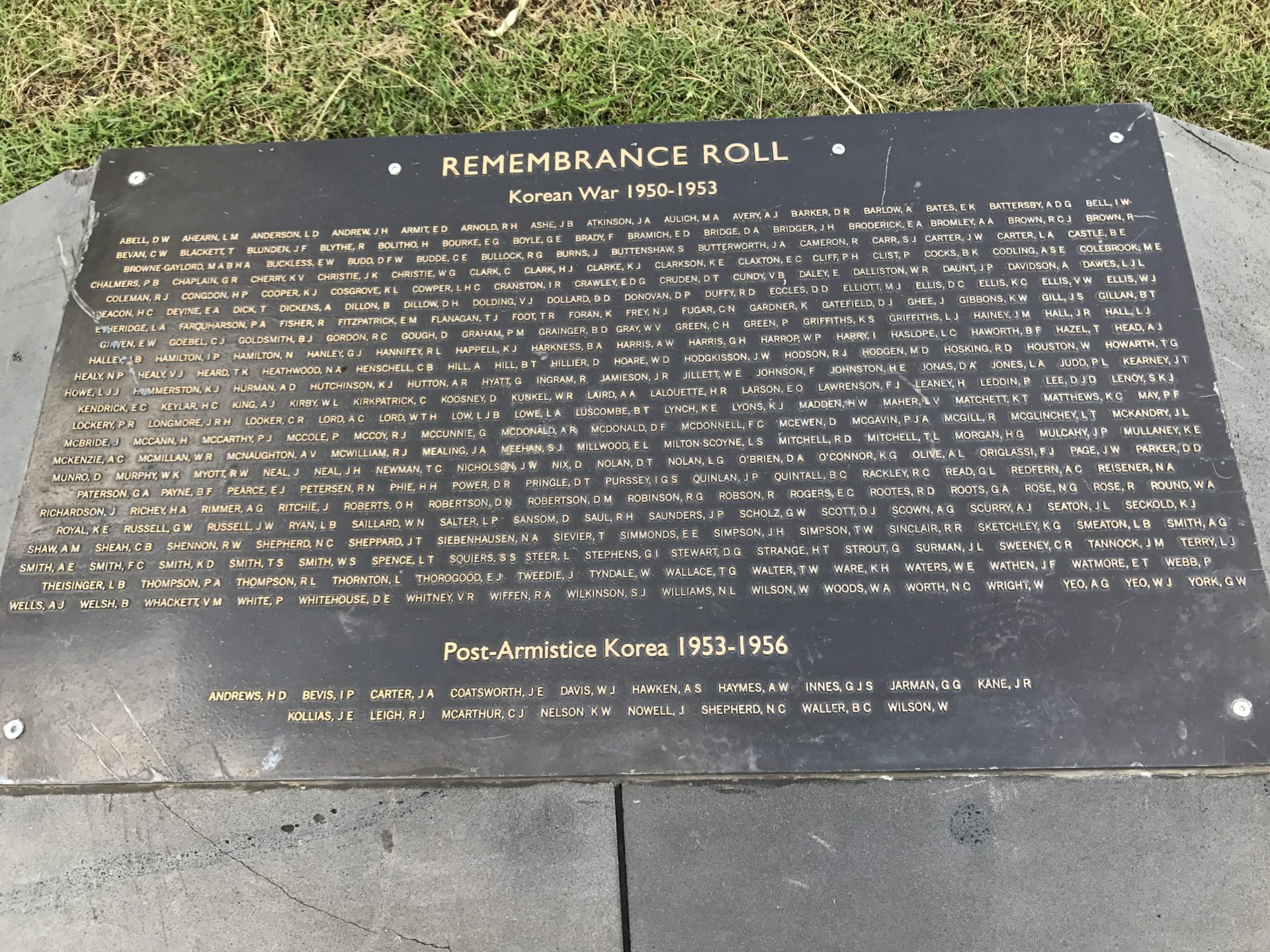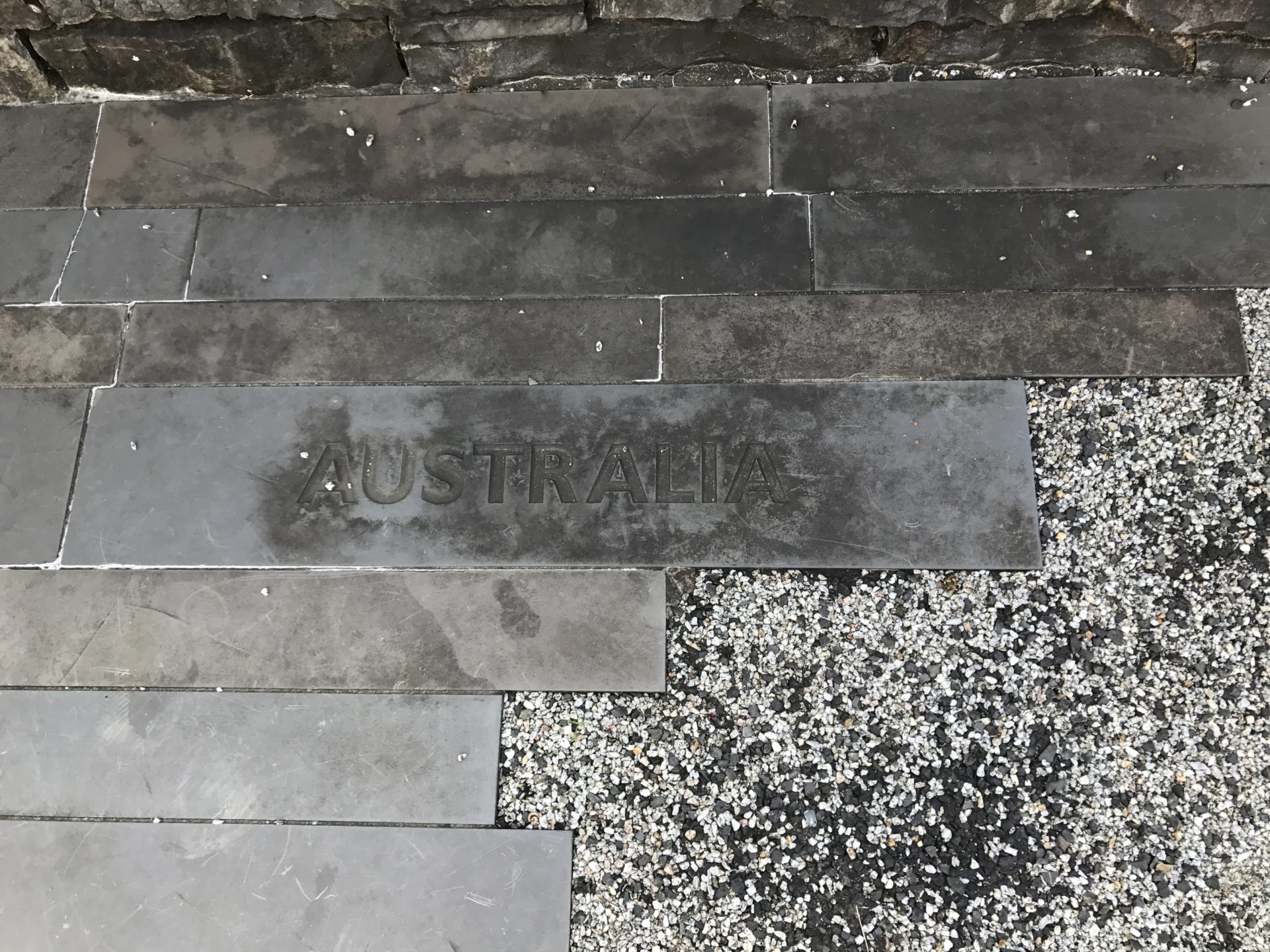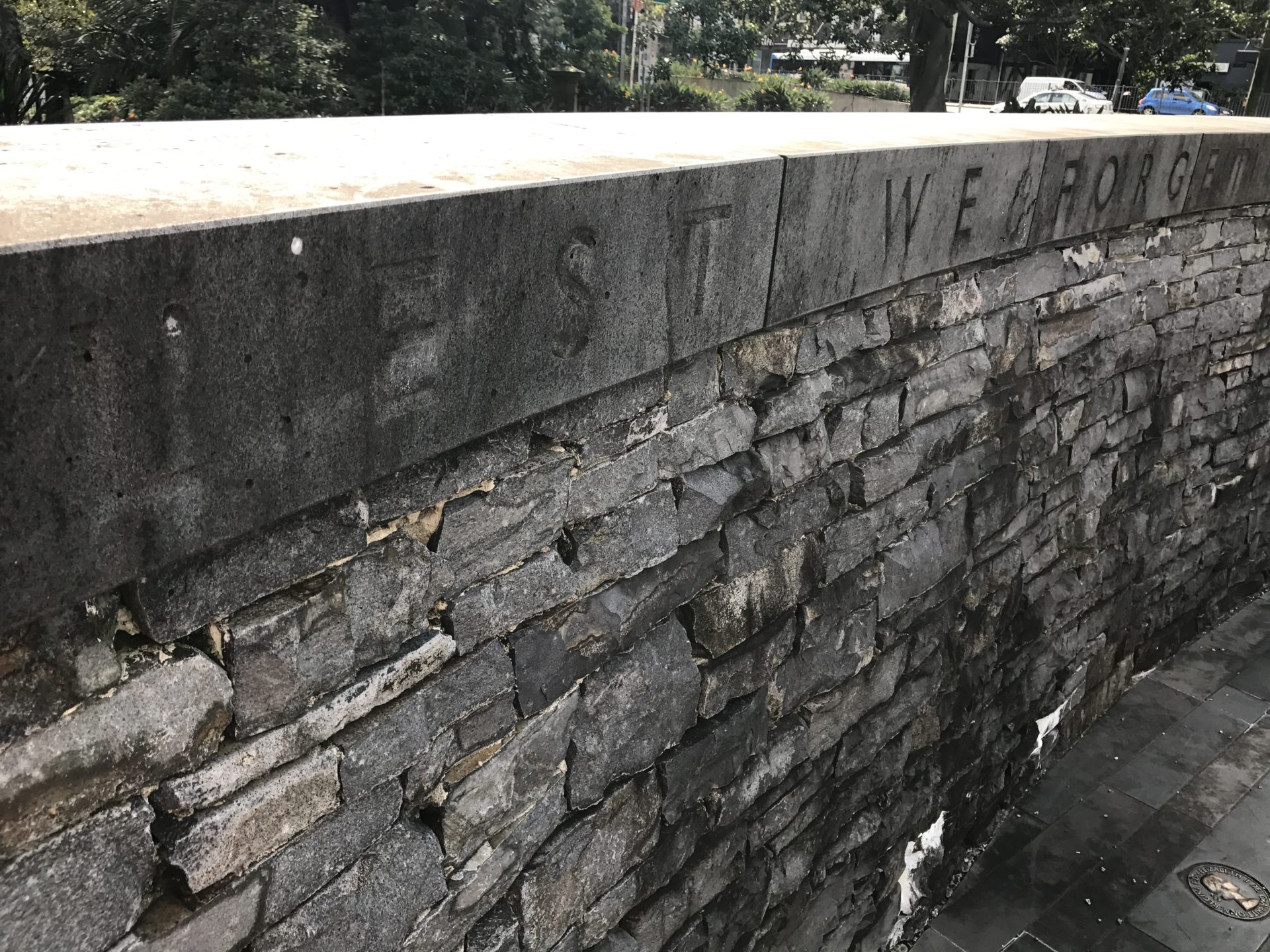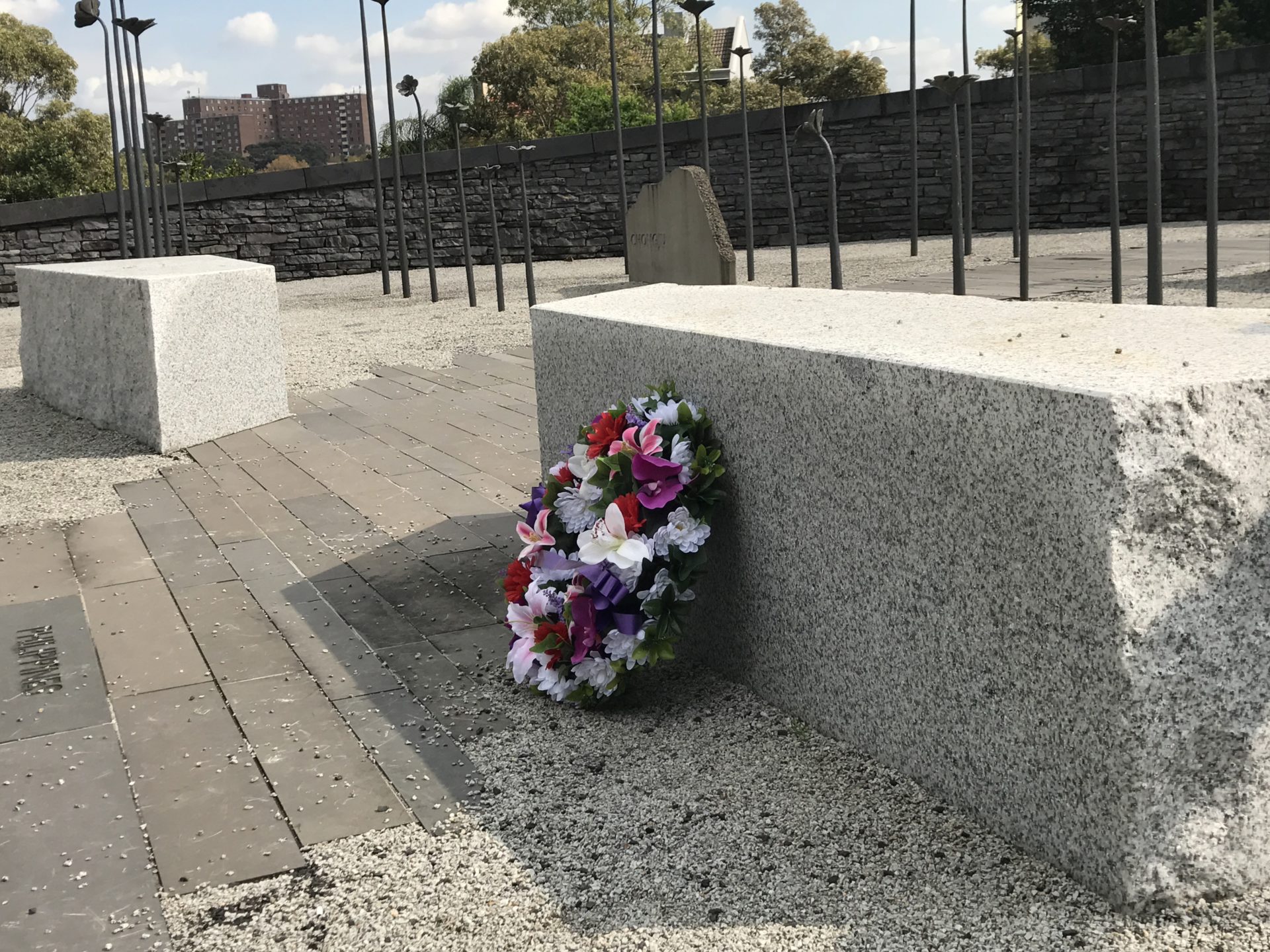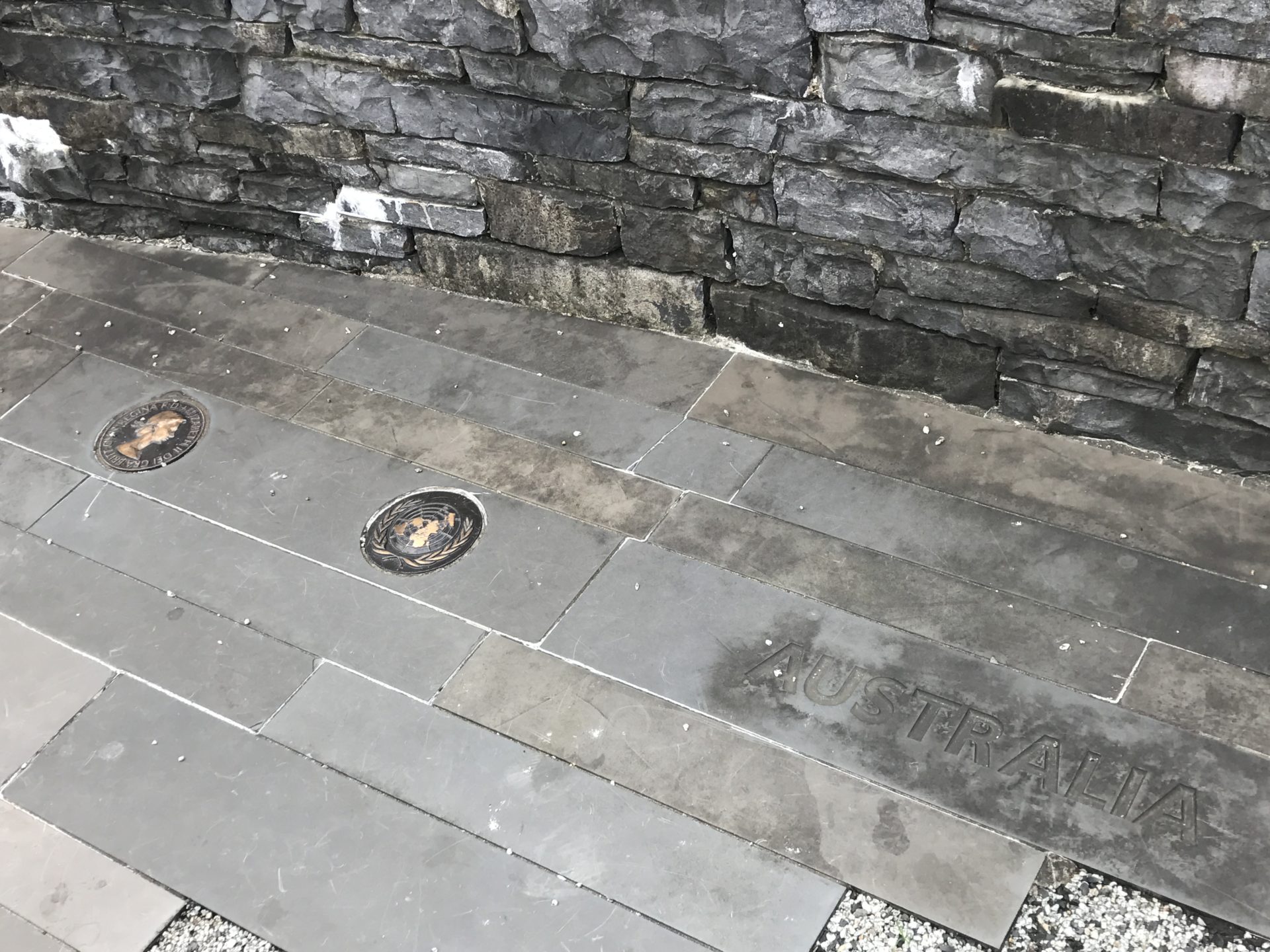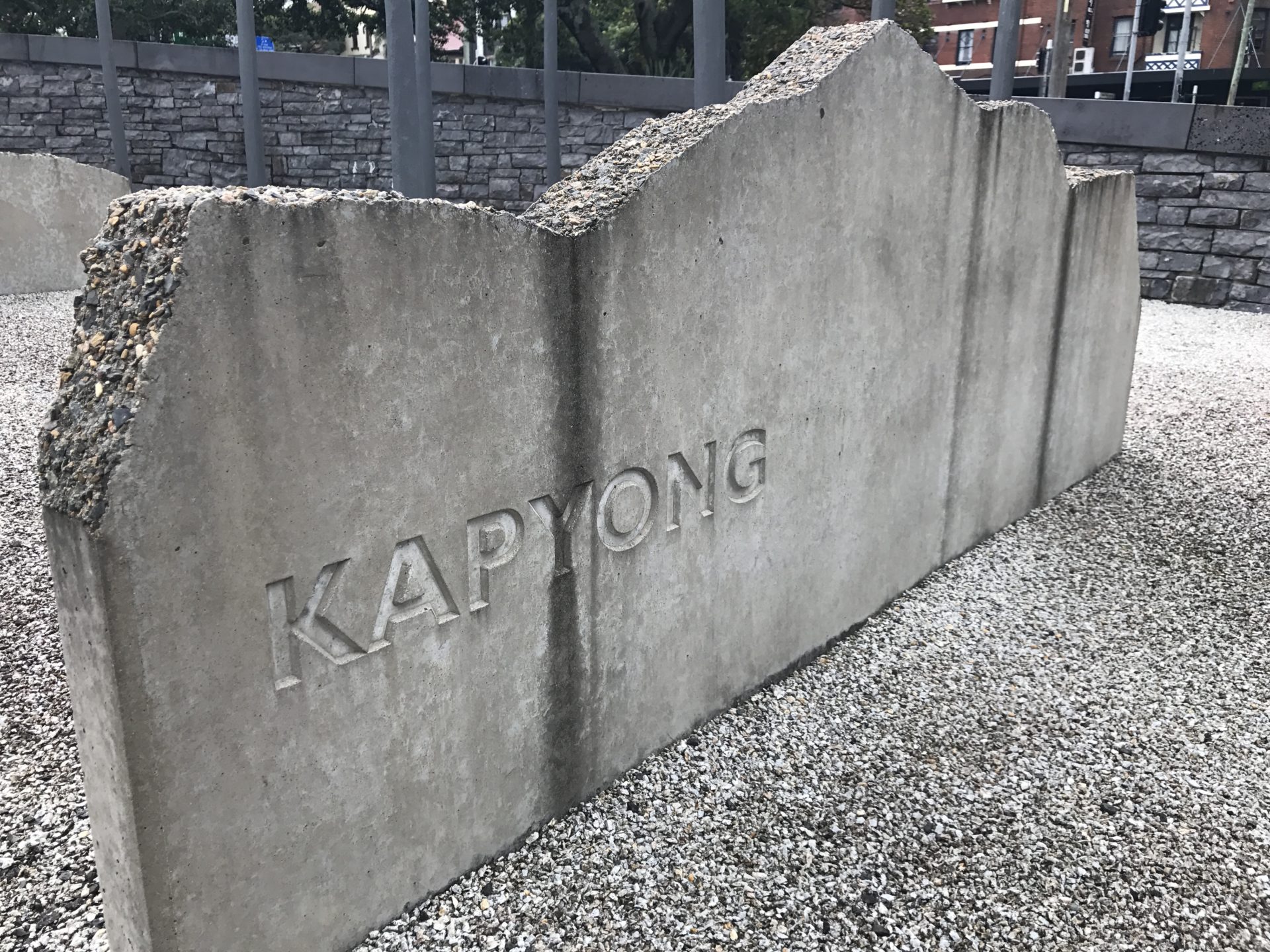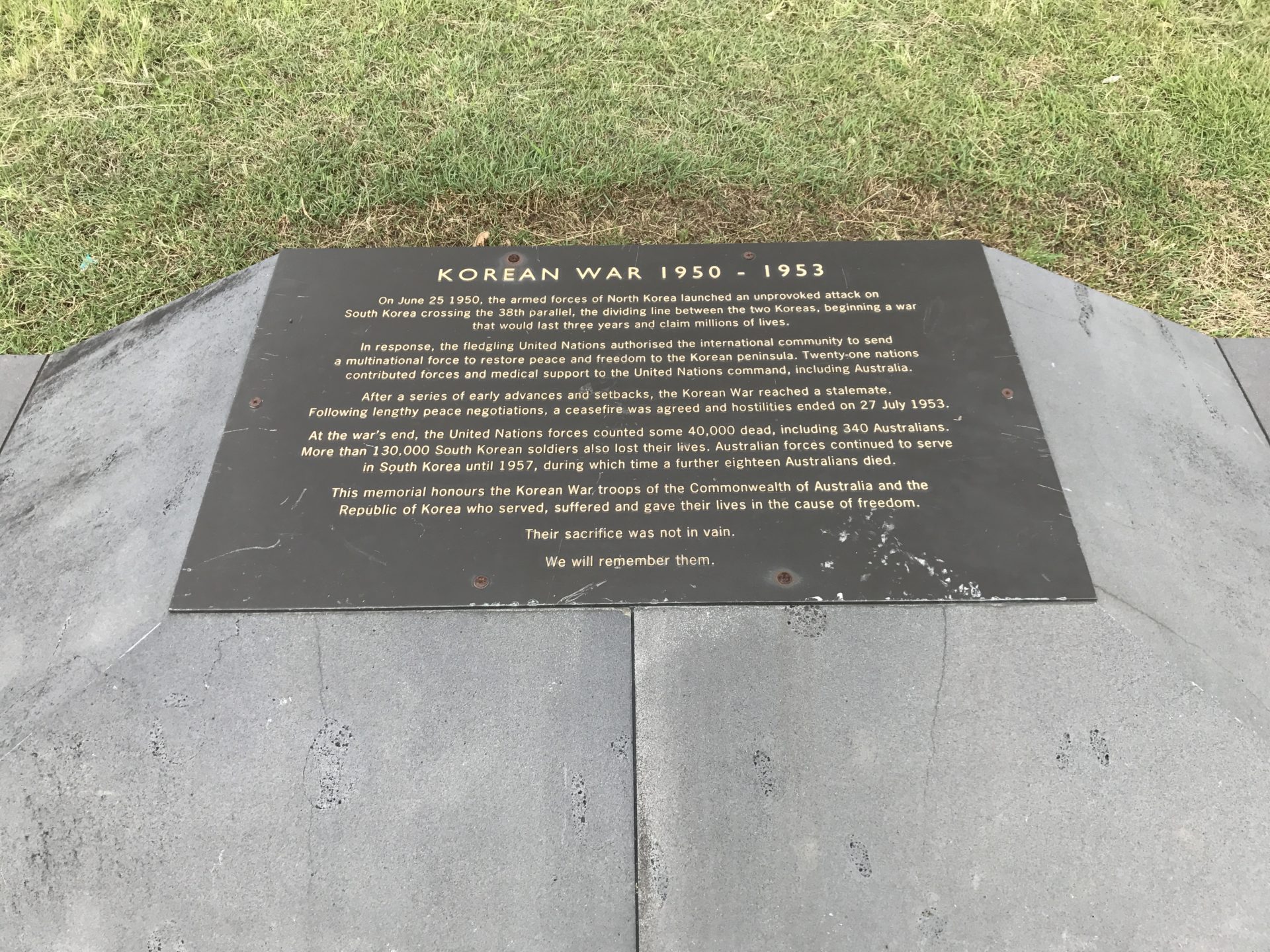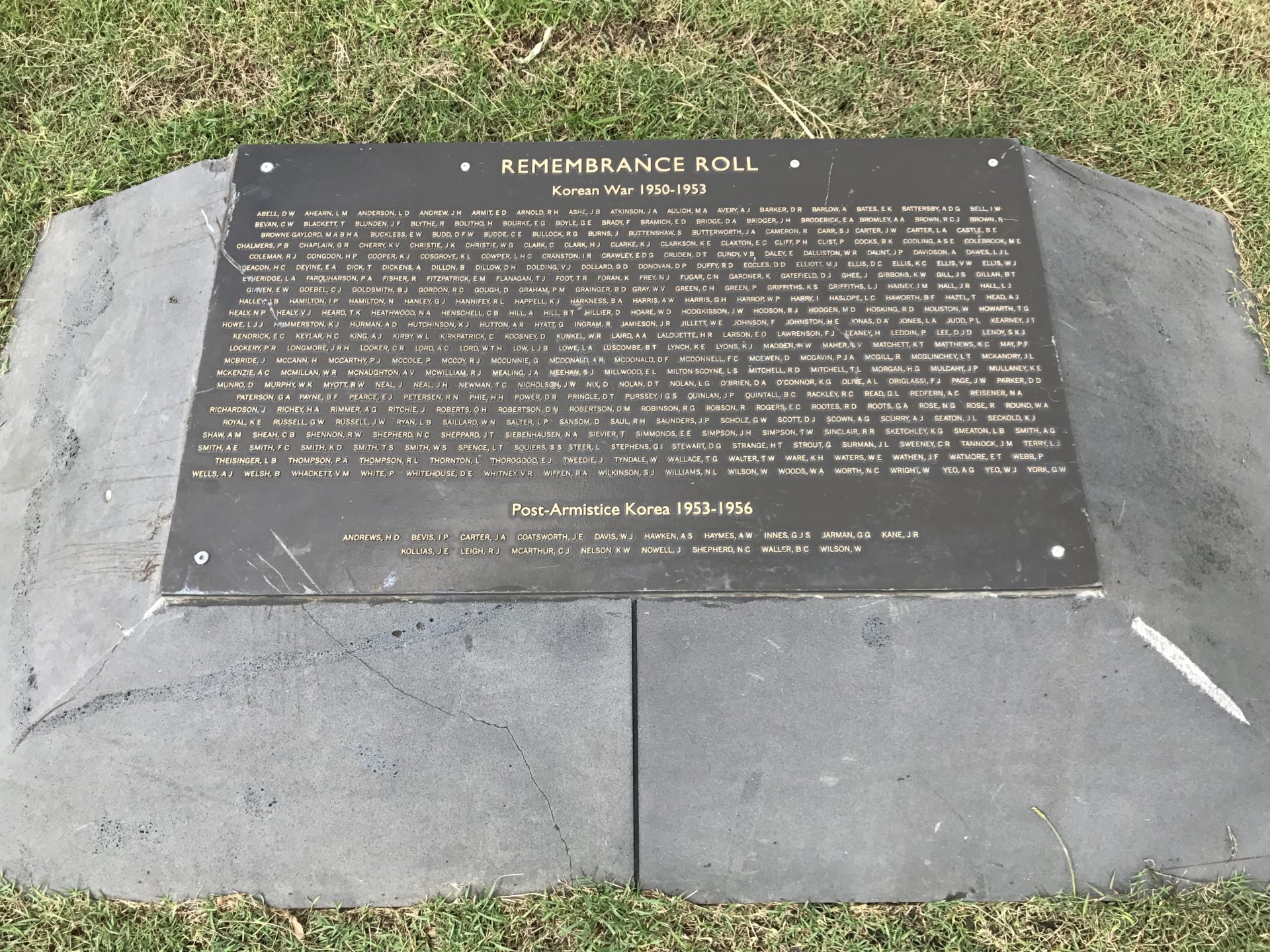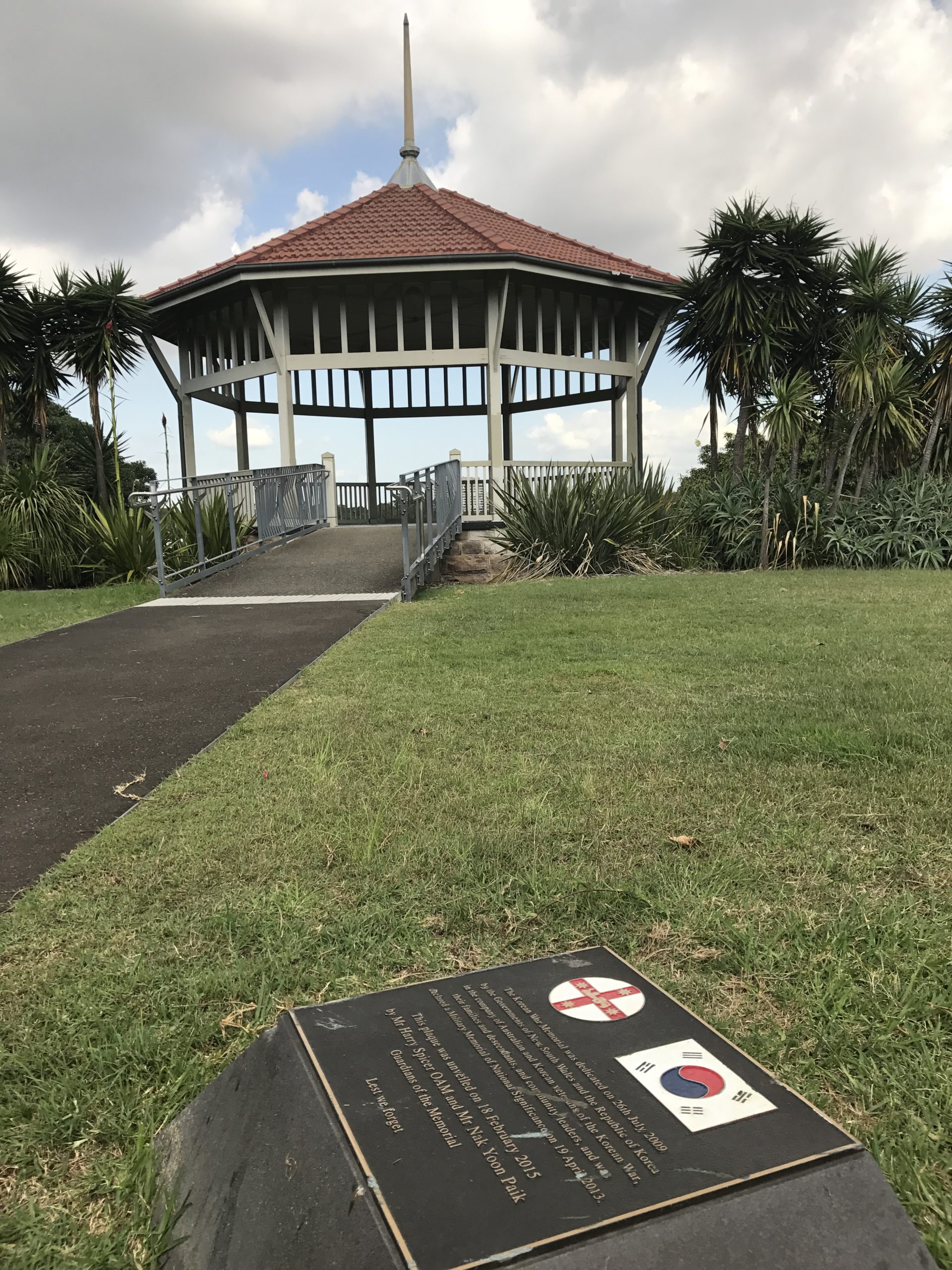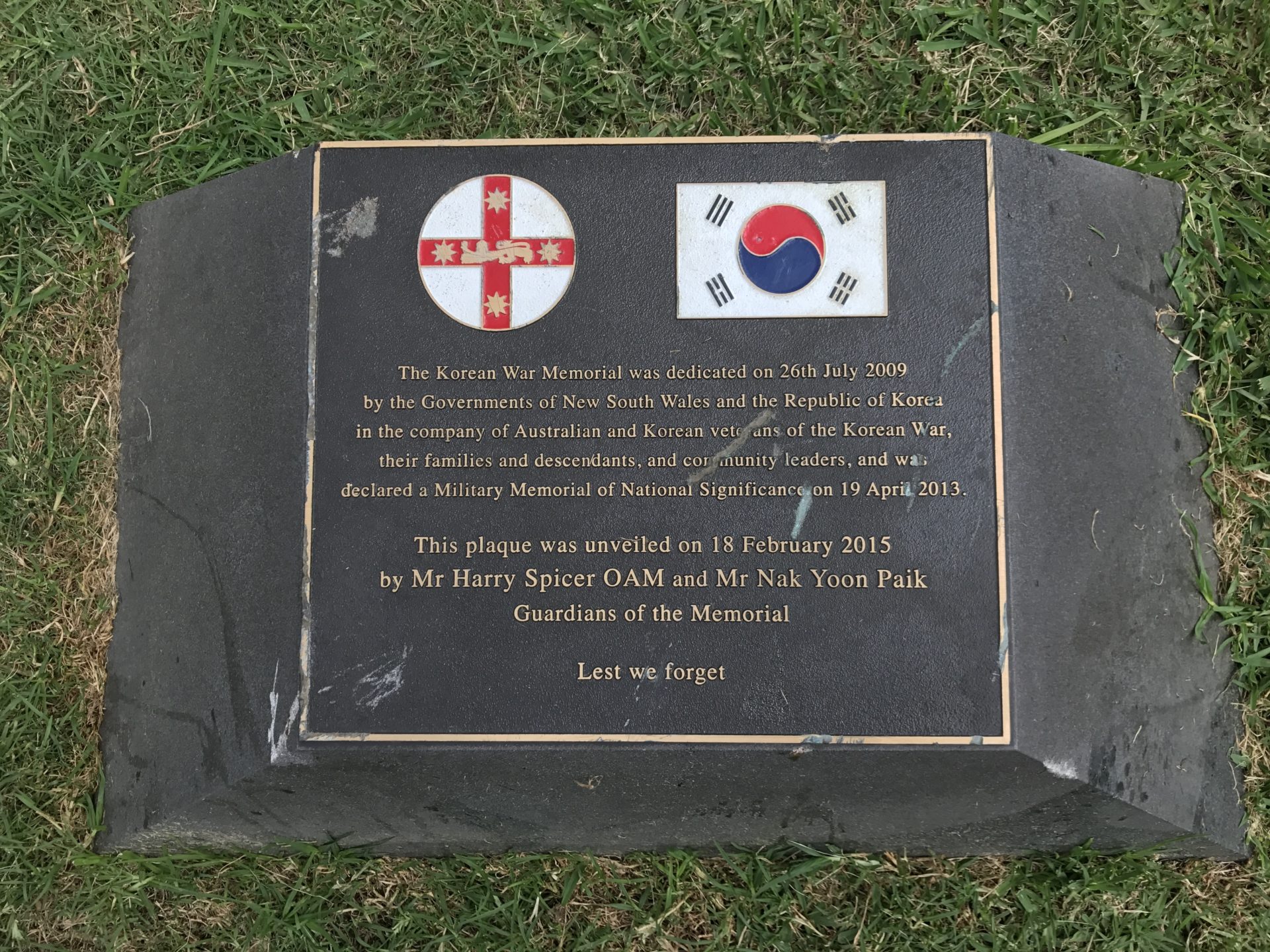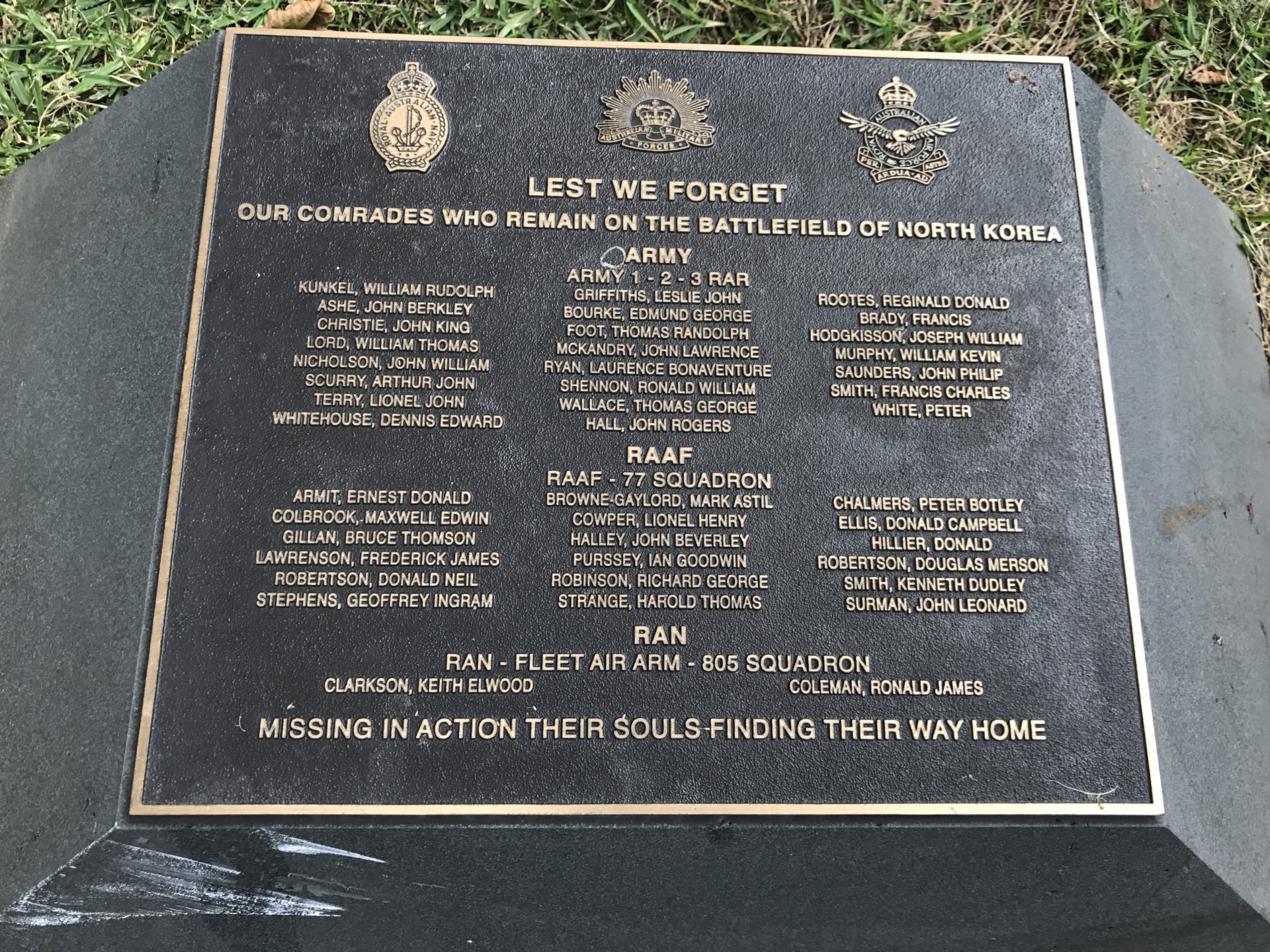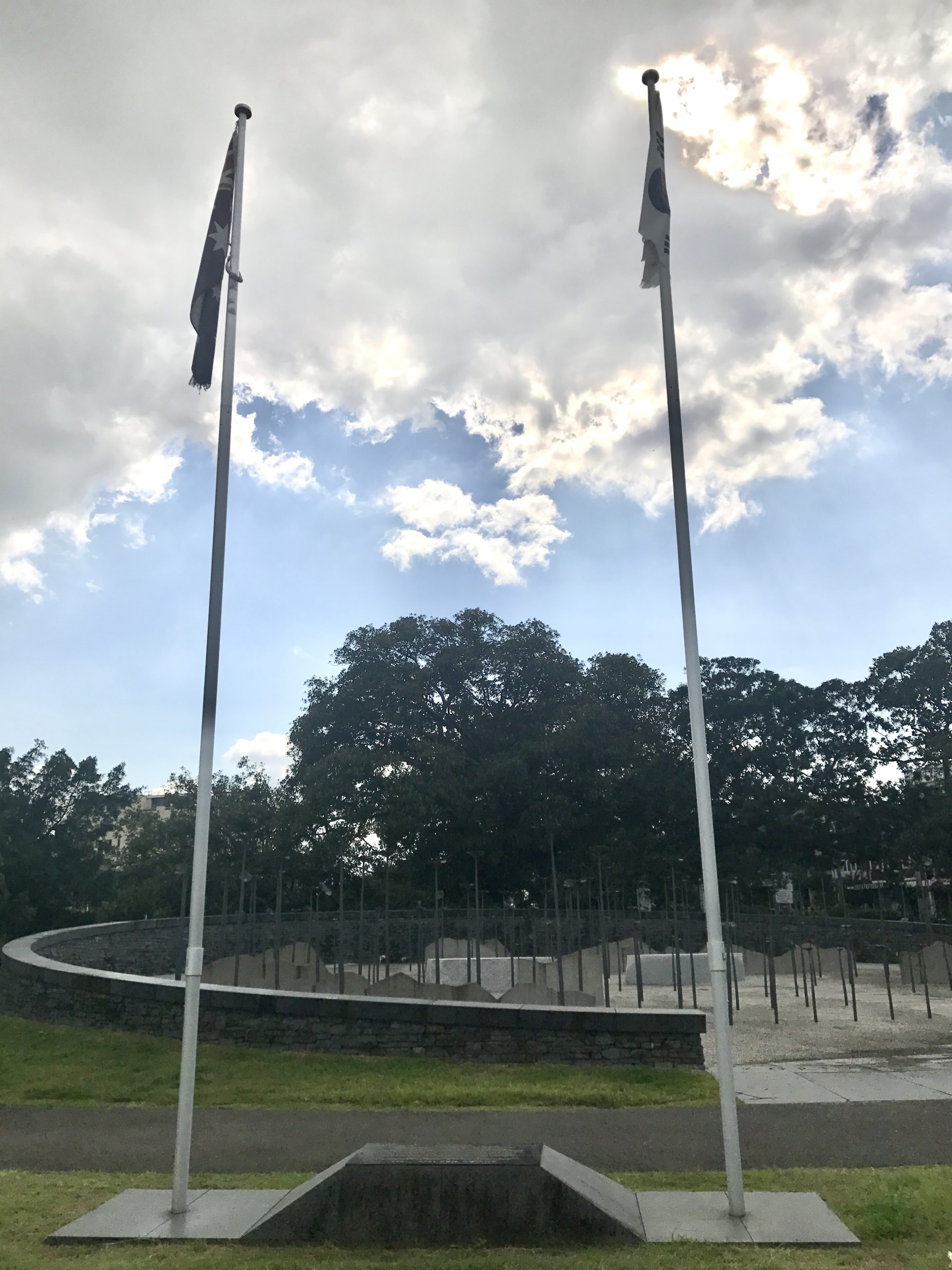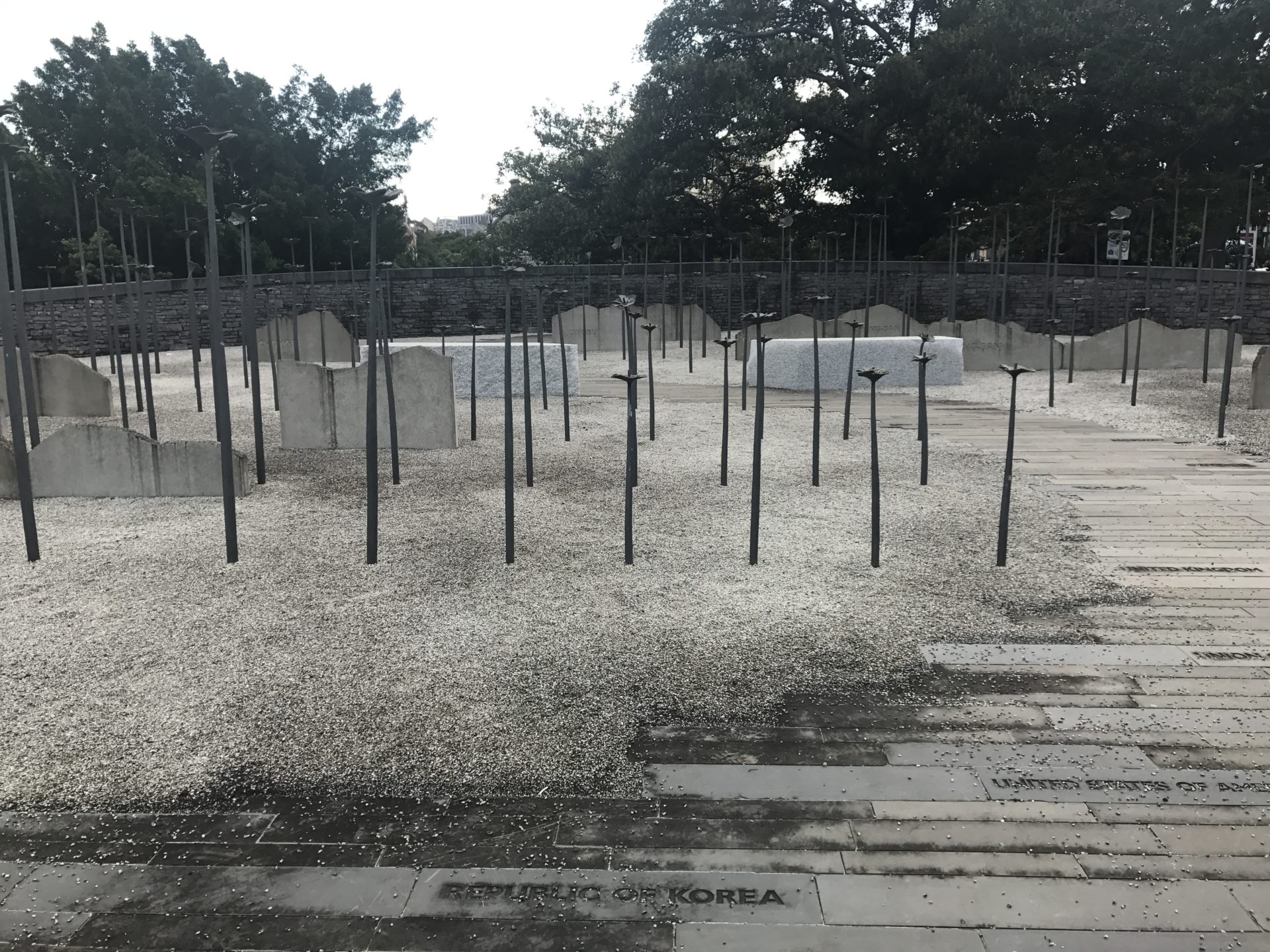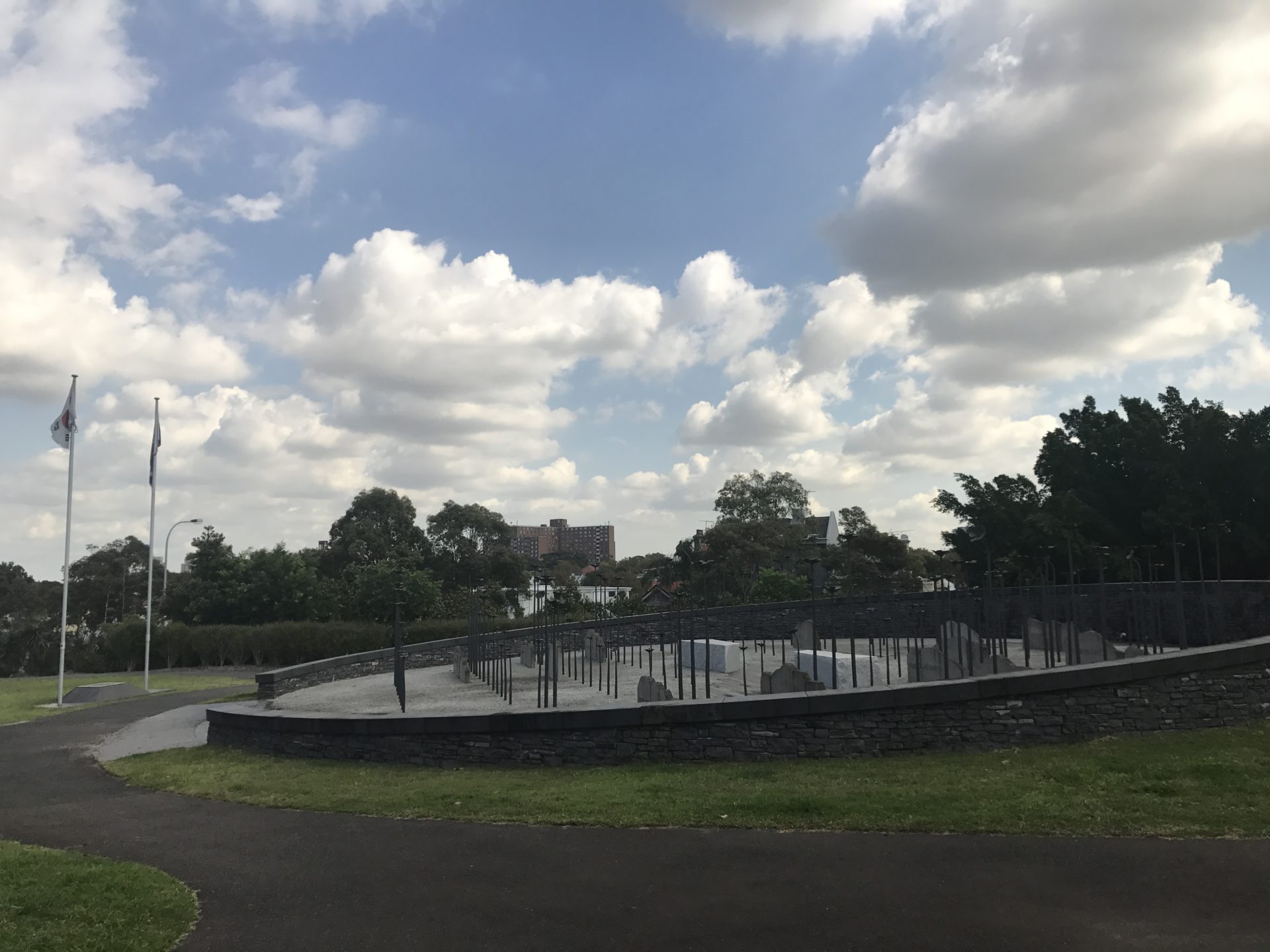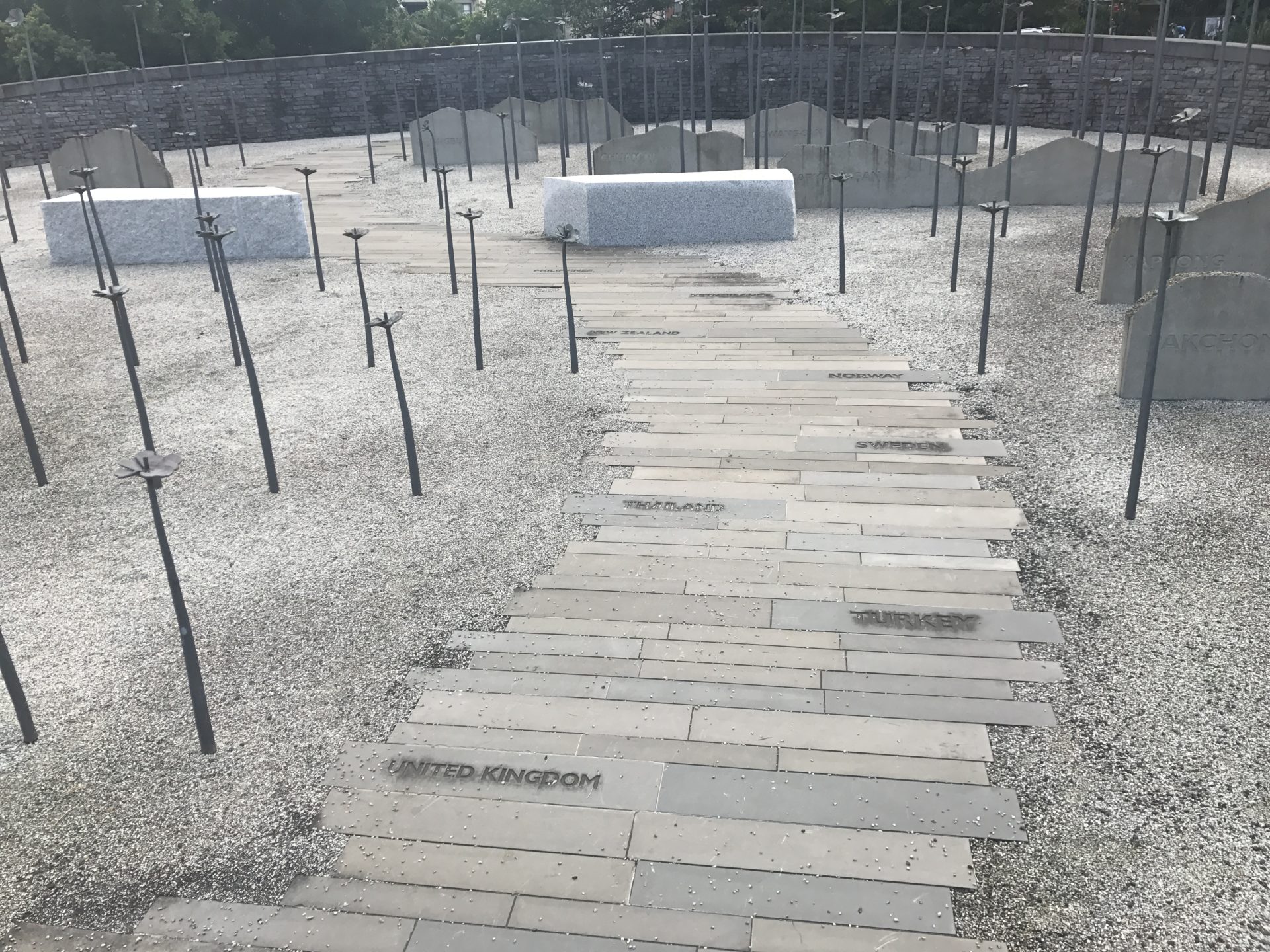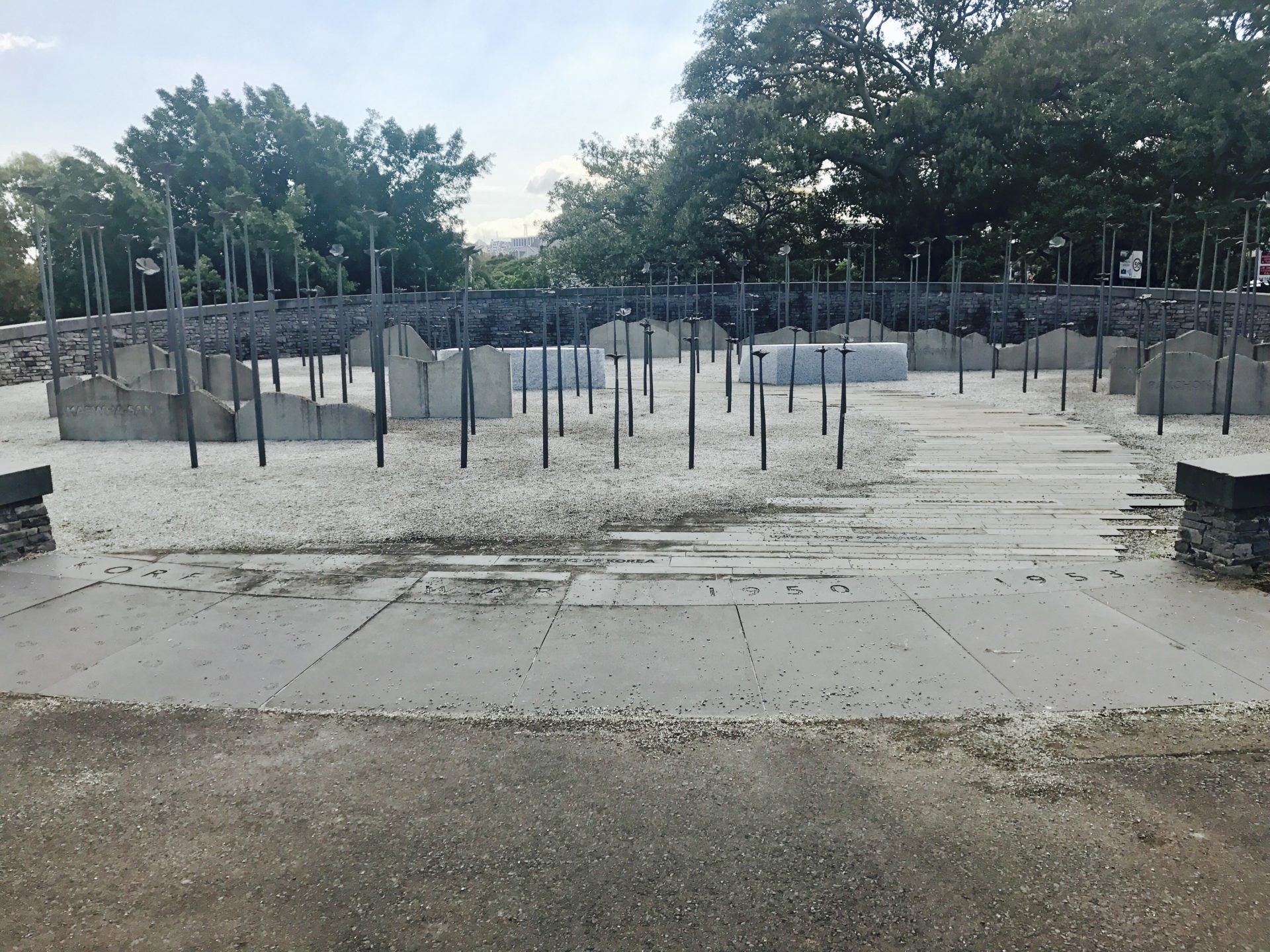Veteran Stories
>> My name is Mick Kilhov. I live in Australia now. I served in Korea with the British Army, the 10th Regiment. I had never heard about Korea. I didn't know where it was. I couldn't even point on a map where Korea was, but anyway, I was serving in Germany and was sent from Germany back to the UK to familiarize ourselves with the Centurion tank, which is the heavy tank used with the armor, and after 6 weeks, we were put on a ship, the Empire Halladale, at Liverpool, and it took us 6 weeks to get from Liverpool in England to Pusan. When we got to Pusan, there was an American band on the docks. They were playing, "If I Knew You Were Comin' I'd've Baked a Cake," which we thought was hilarious. We were then unloaded, put on to flatcars and sent on these flatcars from Pusan to Uijeongbu. We went to Uijeongbu. That's the only Korean place I can remember going up to. I remember Seoul. Yes, I remember that, but it was in the middle of the night, pitch black. We were given a bag of rations. The first ration we had was homemade sandwiches, an apple, which you couldn't eat because it frozen solid. During the middle of the night, the train stopped because they said there was going to be an air raid. There was no air raid, but we did stop there, and a little voice came out of the dark, and it wanted to know if we wanted to swap some food for what they had. All they had was apples. We gave them what we had, just sandwiches and a piece of fruit cake. That's what we were given, and they gave us these apples, and we could not bite these apples. We had to hit it with a bayonet, and it shattered like glass. It was frozen solid. Anyway, when we got to Uijeongbu, in the case of taking over from another regiment who were pulling out from Korea, and we took over their positions, and we had Alpha, Beta and Charlie squadrons. Three squadrons were sent to three different areas, some on the Imjin River. I don't know the name of the Korean location. I just know that it was Hill 355, Green Finger, Winston Churchill, Jane Russell. These were all features in Korea, and by then, we weren't told very much about what's going on. We just got what we called a sitrep every morning, a situation report. We were told what action was going on during the night, what action, what we had been through, and I remember being hit by 99 mortars one night on the tank. It didn't make much difference. It blew all the camouflage nets off and the antenna for the radio. It wasn't a very pleasant place. It was just a case of very, very cold in the winter and very hot in the summer. Rations were very meager unless you got combat rations, which were supplied by the Americans. Normal British rations were bully beef and hardtack biscuits, and these tins of bully beef were 7-pound tins that were leftover from the Second World War, and when you took the top off, we had a hiss of gas coming from the meat, and the meat was black. So you had to cut the outside off with your knife and then get to the real piece of meat underneath, the bully beef, and we had hardtack biscuits full of weevils. We had to tap them on the side. We also had what they called pom, which is powdered potato, dehydrated potato, and I can distinctly remember the cook used to ask us, "What would you like today? Would you like a bit of steak and chips?" And you'd say, "No. Just give us the usual," and he'd say, "Oh, do you want your potato mashed, fried?" It was all the same. It was just boiled, boiled, boiled, powdered potato. That was what we had. Combat rations were good. Whenever we could, if we could get to an American camp, they were very generous. We could get from Marines anything you could pick off the table. Whatever they were eating, they'd give you, and at the end of the table, there was stuff donated by American firms. There were things like Hershey bars, writing material, torches, pens, writing paper, and right at the end, you put your name down, and you got a Chicago Herald Tribune sent to you once a month. Very handy because you had nothing else to read, and it was very useful at the end of that period to use as toilet paper as well. The thing that left me my lasting memory of Korea was the suffering of little children. It really left a mark on me. Normally, I wouldn't shed tears, but after seeing little babies and little girls and boys in the condition they were in, it really affected me. I did more than a year in Korea. I was then claimed by my older brother to his regiment. It was an artillery regiment. So I went over to spend another 3 months with them. We then went from Korea. We said farewell to our friends in Pusan who were lying sleeping in the cemetery. We went from there to Hong Kong for another year or just over, and by that time, because we had come from Germany with our own seas for 3 years, we went back to UK. And within 5 months of getting back to UK, I was then called up again for Cyprus. We were sent to Cyprus for a year. In the meantime, I got married on one day, the 22nd of October, 1955, and on the 24th of October, I was on an aircraft carrier on my way to Cyprus, where I spent a year. Having done that, I came back to leave the Army for a few months and got called up again, honored to be called up for Suez Canal trouble. So anyway, that's a part of my life, and I'm quite happy I've been married 62 years now to the same woman. I've got one daughter, and I live in Australia now. I'm quite happy with my lot. I've never been back in the UK. I have no desire to go back there. I've just been involved with the Korean War Veteran Association here. I've been their president for over 10 years. I'm still the president emeritus and their quartermaster. So I just do what I can to help my fellow man. I do a lot of hospital visits. I visit people who are in nursing homes who have had sickness, strokes, dementia. That's as much as I can do for my fellow man, and I hope one day, and I've also decreed that when I pass away and I leave this mortal coil that my body goes to research. I don't want a funeral. I don't want anything left of me. It'll go to the University of New South Wales. And I'll say my goodbyes there. Thank you.
>> My name is Peter Berger. I served in Korea in 1952 but not a long time. Most of the time, I was in headquarters. From Korea, which as I said, wasn't a very long time, I was sent in Japan and was in [INAUDIBLE] in Japan. Actually, the second time, it was over in [INAUDIBLE], and we spent our time running up and down the hills. We got very fit, but while [INAUDIBLE] I sent out the signals, and I used to work on the switchboard or phones or whatever was needed. And from Korea, I went to Japan, as I said, and I spent quite some time there, and then we were sent to Singapore. And in Singapore, I saw advertised, people saying that they needed NGOs to volunteer for the Gurkhas. So I volunteered for the Gurkha, and I went out of the country to a place called Seremban, and I spent the rest of my time there serving with the Gurkhas. Then I was sent home, and I really didn't want to go home because I was quite enjoying myself, and you might think I did fly home, and I had to leave most of my stuff that I had collected over the time, all of it there, including beautiful Gurkha khukuri. You know the big knife? So I had to leave that one there too, but I already said it all.
>> Okay, but I still wanted you on camera.
>> I'm Harry Spicer. I'm a Korean War veteran. I was in the British Army, and I went to Korea in August 1950, and I was there for 10 months. Then we went back from there back to Hong Kong, where we were before we went to Korea, and then I spent 3 months in Malaya and came back to Hong Kong again, and then I transferred to the Parachute Regiment, and I went back to England in the December of that year, and I joined the Parachute Regiment. It was just [INAUDIBLE] and we met our ex-colonel, a Korean War veteran, and he wanted to get a monument for the Korean Veterans in Sydney. I met with him, and then a few of us met with him, actually, and we decided we'd form a committee, and he was the president of the committee. I was the vice president, and we got together. We started talking about the monument. We always said just we want from the government just the land to build the memorial on and that we didn't need money because the Korean colonel had said, "We don't need money. We just want the ground to put the memorial on." So I got my local member of parliament to try and get an interview with Morris Iemma, who was the Premier of New South Wales then, to talk to him about getting the land to build the memorial, and whenever I met with him, we told him that, "We just want the land. We don't want money," because the colonel says, "Don't worry about the money. Money will be okay." So he accepted that, and at the next meeting of the Korean Veterans, which they hold 1 day a year in Government House in Sydney, and in his speech, he spoke about it, and he said, "I'm behind it 101 percent where possible and to get everything we can done to get this memorial. We've just got to get the memorial built." So then they formed a committee with the government, and basically, the government took over the organizing of the monument, and we had the committee. I was on the committee. There was a number of government people, the government surveyor and finance minister from the government and the Korean from the Korean Veterans Association, and we got the committee to start doing the memorial. The first thing, of course, was to get the land, so the government looked at a number of places that we could get, and they offered them to us, and we looked at them, and what they offered wasn't suitable, we didn't think. Then they came up with the site at Moore Park in Sydney, and we looked at that and said, "Oh, yeah, that's it. That's the place to build the memorial." So the decision was made, and we told the government that we would like to have that in Moore Park, and they accepted that, and then we started working on the memorial itself, the design and everything else of the memorial, and I don't know how many meetings we had, but it used to be every week, every couple weeks, once a month, at different times just when it was needed to make decisions on what we must do, but all the work was being done by the government, the architects, detail with parliament, the government surveyor, government finance, all the bodies that were needed for to build the memorial. They all had a position on the committee. So we was there, and we made our suggestions of what we want, and they'd ask us exactly what we wanted, what sort of thing we wanted. So it was decided that we get some quotes of designs, and I think we had about five. Lots of people gave us a design for the memorial. We went through them. We picked the one that we do have now, which as far as we were concerned was the number one pick, and by the response we've had from people since it's been built, we made the right decision, and so then it was there from then on. We got to ... So then we got onto raising the funds for the memorial. We did tell the government that we won't need money, but the colonel's idea was ... He was the fella who said that we don't need money, but we didn't know at the time, he had cancer, and it wasn't long after, we got the decision from the government that they were going to support it, and he passed. So I took over the presidency of the committee, which is the Australian and Korean War Memorial Association, and then from there on, we just carried on with the government, and gradually got all of the things necessary done and got to the building of the memorial and the design. They came up with the design of the memorial, but some of the things on it, they didn't. We got the names of all the countries that served in Korea on the pathway on the memorial. That was my idea, and we also put the names of all of the battles that the Australians served at and that became battles, and we got the names of all those on different stones within the memorial, and also then we got the Korean national flag, and we had poles with the national flag on them in the memorial, and we also had the copies of the medals that the Australians received, the United Nations medal and the Korean medal, and the Korean medal is the same as is given to any of the Commonwealth forces that fought in Korea. When the British got the medals, they all got the war medal for Korea.
>> What have been the reactions of ... What do the veterans feel about this memorial?
>> They're happy with it.
>> Mm.
>> They are happy with it, yeah. I don't think we've had any comments that was against any part of it, so it's worked out that we liked it. They liked it, so that's it, and nobody's ever said, "We should have done this. We should have done that."
>> Oh, yeah.
>> I think people are happy with what we finished on.
>> And the significance of the area, the surrounding area?
>> That's got no significance with regards to the Korean War.
>> Oh, you're right, but the significance of this area with Anzac Parade.
>> Yeah, no, that didn't come into it either. It was just the place where ...
>> I know, but isn't it still very meaningful that it's ...
>> Oh, well, it's on Anzac Parade.
>> Yeah.
>> It's on Anzac Parade, yeah, yeah.
>> And where it's the Anzac Parade across where they're commemorating World War I.
>> Yeah.
>> Yeah.
>> There's a memorial, yeah.
>> It's not just a ...
>> A special dedication ...
>> It's not just randomly located in a remote area.
>> Yeah, yeah.
>> It's a pretty significant road part.
>> It is, yeah.
>> Yeah. Now let's go back to your experience in the war a little bit. So do you have any recollections, something, I don't know, like an anecdote from the war, your time in Korea in 1950?
>> We went there in August of '50, and there was the Middlesex Regiment and the Argyll and Sutherland Highlanders, and at that time, we only held the Pusan area, around the Pusan area of Korea, and I think, basically, the North Koreans had run out of steam, and they were getting their reserves up and everything before they moved on, and in that time, of course, there was getting more troops out there. We were the first troops after the Americans to go there, the British who got to do so, and we was the 27th Brigade. Then in the ... I think it was about October ... The 3rd Battalion, Royal Australian Regiment joined us, and then we became 27th British Commonwealth Brigade. Then after that, we had New Zealand Artillery join us. They came into the brigade, and we also got the Princess Patricia's Canadian Light Infantry Battalion join us, and there was an Indian medical team that joined us, and so we was the Commonwealth Brigade. We was always under strength, and the units, when we took over an area from the Americans, we'd have a battalion to take over where they had a brigade, so the ... A brigade is about three times the size of a battalion, so we was taking over a much bigger area, which made it more dangerous because with people on the ground compared to what they were, and the first thing that we had as far as the war was concerned is that we was in positions on the Nakdong River, and we got shelled and mortared, and the noise, it's unbelievable. It was just so loud, and there's nothing to do. What we'd do is just sit in our trench and hope that it didn't land in our trench, which it didn't, thank goodness, and a short time after that, we had to ... We set out on a platoon patrol across the Nakdong River, and it wasn't a fighting patrol. It was just to observe, see if we could find out what was going on, went across the river. There's sand beaches each side of the Nakdong River, and we turned left as we went across from the boats, and we left a section with the boats, and then the other two sections went along the beachline, from the beachline along, and we must have been probably about a mile or so along there, and we looked up in the hills, and we saw the enemy up on the hills, and we saw them waving. They was waving people from the other side of the hill, and they were all of a sudden [Indistinct] gunning at as with machine guns, and we couldn't touch them because it was too far for us with our rifles or [Indistinct] guns to extend, and so we hit the ground as soon as they started, and where the river goes along, most of the other section, the two, was along the line of the river, but my section, I was in section one. My section went from the edge of the river up to this bank where the other section was, so it went ... The shots was going around us, and they were so close. I just thought myself, "If you're going to hit me, hit me," because the tension was so, so great, and then as soon as there was just a lapse in the machine gun fire, [INAUDIBLE] in the bank, so we dashed it to the bank. We had with us four Americans. They was for if we needed artillery support. As soon as the Koreans opened fire, three of the Americans took off, and it was on officer, sergeant and two others, but the officer stayed, and one of the Americans, when they took off, got hit. He got right through the middle, but he was okay. So when we finished up, we carried him out, and when they fired, we'd get down, and when they stopped firing, we'd get up and move, and we also had our own machine guns on the other side of the river firing at them to keep them down as well. So we come in on the way back, and I was right behind that [INAUDIBLE], and walking along, I said to him, "I think there might be a reception or something [INAUDIBLE] that come down and try and block us off," and he said, "Yeah," because he was that tense, and then all of a sudden, there was a noise of machine gun, and we hit the ground, and he was still standing up. I said, "Was that you, sir?" He said, "Yeah." His machine gun went off, but anyway, we found out when we got back the boats, the other Americans was there, the ones that took off, the two that took off, and they'd have taken the boats if we hadn't got the section out, and there was a party coming down to meet us, but our machine guns opened on them, so that broke them up, so we was right there, so we got back in the boats, and we crossed the river, and that was that. The night before we went down to the river, we slept in Korean houses overnight, and we went overnight, went through their clothing. We got back, and that was okay, and then after that, we moved forward across the river, and we was given the job of taking a particular hill, which was later called Middlesex Hill because that was the British [Indistinct], and we had platoon go first with a small hill and then a large hill went on from there, and the platoon went, just one platoon, went and took the small hill, and I think they got two killed taking that hill. Then the rest of the company took the larger hill, and we lost ... I think we lost about three or four taking the hill, and it took us nearly all day to get up to the top of the hill, and the Koreans, there was some dead, and some had took off, and when we got there, they had fires, and one the North Koreans had got thrown into the fire, and his clothes was burning, and his ammunition was exploding out of his body, and [INAUDIBLE], and it was with his own [INAUDIBLE] explode. Then at the nighttime, they mortared us, and we had another one killed when he was wounded. The next day, the Argyll and Sutherland Highlanders was to take another hill the other side of the road to where we were, and when they went up, we used to have color signs that we used to have made out on the ground. They'd be red or yellow or whatever, and they'd be sort of in a cross one day, two lines together another day, all different sort of shapes so that the air knew that we were friendly. Well, they had their colors, and they had them on the floor, but the Americans came and they bombed them, and with the ... what? What do they call the bombs?
>> Mortar?
>> No, fire.
>> [INAUDIBLE] bombs?
>> No.
>> Flash bombs?
>> No, the ones they drop from the airplanes.
>> Air bombs?
>> What?
>> Air bombs.
>> What? What'd you say?
>> [INAUDIBLE]
>> No. Once you're up there, you drop the bombs, and it's just all fire, flame and ...
>> Yeah, napalm.
>> Napalm, they dropped ... We'll have to sort that out. They dropped napalm on the Argylls, and I don't remember how many they killed. I think there was about 20 or something killed, and then the second-in-command of the Argylls, Major Muir, he won the VC on that, but they came down, and we were still on a hill. My company was on this hill over here, and the rest of the battalion was down behind, and they went up and helped get the Argylls get down. Then we moved on from there, and we did a little bit in the country, looking for any North Koreans who might be hanging around. Then that's when the Australians joined us, and we flew up to Seoul to keep [INAUDIBLE] airport. The Australians stayed there for a while cleaning up, and then we was at the airport probably about 3 days [INAUDIBLE] and we started moving north, and so every day, we'd get in our trucks, go north, stop at night, dig in. Maybe we'd have some action. Maybe we wouldn't. Maybe we'd run into some action. We'd just keep it as we went, and we did that all the way up, and there was a number of battles. I can't remember what they were, all of them, but there was a number of battles, and we got as far as ... What is it? I can't think of the damn name. [INAUDIBLE], I think it was. I think it was [INAUDIBLE]. We got as far as there, and then the winter started coming in, and then all of a sudden they said, "Chinese on horseback," you see, and the Chinese came into the war, came across the border, and they stayed there quite a while. We didn't even know they were there. They didn't know [INAUDIBLE] and there was hundreds of thousands of them. They came [INAUDIBLE], and when they did, our brigade was out on its own, and they were saying nothing could save the British 27th Brigade because the north would surround us and we would be gone, but anyway we did. We got out. We came back, and as we came back, we had to fight and withdraw, and we got action, and that is when some troops stayed in their position to let the others come through, and all the time when doing that, when we were in our position, we were expecting the enemy to be right behind them, so you'd expect that you're going to get caught, but luckily, we didn't. We just got away with it, but we got back and went way back down to the other side of the border, the 38th parallel, which I think we stopped there. We dug in and everything else. Then the Chinese came, and then there was a backwards and forwards, and we left in the ... June, I think it was, we left. June, we left and then went back to Hong Kong, and from there, from Hong Kong, I went to ... The battalion had to stay there another 10 months or something to complete their 3 years, but I volunteered for the Parachute Regiment, and I went back to England to join the Parachute Regiment.
>> Mm.
>> Good morning, or good evening, Hannah. My name is Ian Crawford. I am a retired rear admiral in the Royal Australian Navy. I served in Korea in 1950 and '51. At that time when I first arrived there, I was an 18-year-old midshipman serving in the Royal Navy light cruiser HMAS Shoalhaven. We were intended to be the flagship of the East Indies Station based in Trincomalee in Sri Lanka, but when the Korean War broke out, the British had to withdraw a cruiser from the Far East, and we were very quickly prepared to go to Korea. On our way there, we were diverted to Hong Kong to pick up the 1st Battalion, the Argyll and Sutherland Highlanders, who, together with the Middlesex Regiment, who were carried in the HMS Unicorn and, were the first British troops and the first non-American and Korean troops in the Korean War. They were to form the 27th Brigade, and the Australian Army, 3rd Battalion, Royal Australian Regiment, joined later in September to form this brigade. After delivering the Argyll and Sutherland Highlanders to Pusan, and at that time, Pusan Perimeter was at its smallest, we landed the Argylls and the Middlesex Regiment from the HMS Unicorn, and we went about our naval duties. Very soon after that in September, we were part of the cover force for the landing at Inchon. We were escorting the British carrier, HMAS Triumph. Two Australian destroyers were with us, HMAS Warramunga and HMAS Bataan, and they stayed with us for most of our time on the west coast. The British, various fleets, together with the Commonwealth navies, formed the West Coast Task Group. On one occasion, we were transferred to the East Coast, and we went as far north as Chongjin, which is 2 miles from the Russian border. That was as far north as you could get in Korea, and we bombarded there. By October, there was the general feeling ... The forces, after being released from the Perimeter in Pusan, went up to the peninsula and across the 38th parallel, and the feeling was the Korean War was over. So the British withdrew to Hong Kong but not us because we were from the East Indies. We had no families in Hong Kong, so we stayed there, and we were just starting a refit in Kure in Japan when the news came through that the Chinese had entered the war, and they were making fast progress down the peninsula. We were quickly put together and diverted to the Taedong River, which is in North Korea, which is the entrance to the river that leads to Chinnamp'o, which is the port for Pyongyang, so we were diverted there in the belief that we were going to have to evacuate large segments of the Army and a lot of civilians. In the event that we evacuated a lot of civilians, we in a light cruiser could not get up the river, the Taedong River. It was very narrow, badly chartered and the sandbanks were not evident. So there were three Canadian destroyers, two Australian destroyers and one American destroyer. One Australian destroyer went aground, one Canadian destroyer got a wire around its propeller, so eventually only two Canadian destroyers, one Australian destroyer and one American destroyer got up to Chinnamp'o. Supervised the evacuation, and the evacuees came down in the ships and in separate pairs, and then they destroyed the Port of Chinnamp'o. Our main operating base when we were on the west coast was an island called Daecheongdo, which our captain used as a base, and everybody followed his example. It became a place where we convened to meet with South Korean guerrillas and exchange information, where our smaller ships took shelter in bad weather while we made our forays up the Gulf of Korea very close to the border with China. The Chinese and North Korean advance continued. We were in Inchon, and it became evident that Inchon was going to be uncovered, and so all the American stores had to be destroyed, and our ship was the last ship out of Inchon. We continued to go into Inchon, moving from position to position so that people would not fix us for counter-bombardment from batteries ashore, and we at times came under fire from these batteries, and eventually, we were 20 miles behind the front line, so we had to leave the port. The great problem was the extreme cold. It was the coldest winter of the century. It was so cold that our close-range weapons, pom-poms, Oerlikons that we had to move the mounting every 15 minutes. Otherwise, the lubricating oil would freeze. And at sea, when the spray came over the bow and hit the superstructure of the ship, it turned into ice, so it was cold. We stayed on patrol for a long time. I think we spent more time on patrol than any other ship. At one stage, we had patrolled 43 days. So the important thing was to keep the sailors entertained, to make sure they got their mail, and we provided our own entertainment. I know for sure, Roseanne, Bob Hope and a lot of Hollywood people came out and did sing to the soldiers. That wasn't available to us. We had to provide our own entertainment, which we did, and it was a great success. The other thing was the feeling we had because everyone thought the war was over, and everybody had gone south to Hong Kong, and we were quickly pushed into the breach. We felt very lonely. We could feel the malevolent omnipotence of China bearing down on us, and morale was very, very low. There came a message from families, from Littleton from families in England because I was the only Australian in the ship. All the others were British. We'd be mentioned in the news, and we were going to get a medal. Now, that amounted to recognition, and one of the most important features for any serviceman, for his morale, is recognition, and this medal was awarded, and I always maintained that recognition is important for morale while serving and for the peace of mind of veterans in their older age, and this has been a principle that has guided for a lot of my time since the Korean War and the various studies that I've done. I've been involved in many studies. The Australian government has been very proactive in trying to determine the problems of the Korean War veterans, and they carried out three studies, health studies, cancer incidence studies, to find out why there was such a large number of Korean War veterans dying early. We had the very comprehensive studies, which at one stage was made available to all other members of a committee that I was working on in Korea for their information. I have been asked by the government to do other studies. We had quite a lot of Australians serving in Korea for the 5 years after 1953, and it was called the post-Armistice period. I was cochairman of that committee, which once again, was motivated by the need to recognize the service of these people after the Korean War because we had people who died there. We had 18 people die during this post-Armistice period. Once again, the recognition of these people and the service of these people was so important. And I'm still involved. We have 43 missing in action. Some will be in the demilitarized zone. Some will be in North Korea still. Many will have been recovered, and we are trying to develop a process where ... And those who were recovered who were Caucasoid will probably be in Hawaii where the Americans take all their casualties, all their dead from all wars who have not been identified, and there is a process using DNA and dental records, and we are trying to progress more actively on the part of our government to identify these people. Also, I started the program for an Australian National Korean War Memorial. It became a big hobby of mine. At that time when I was thinking about it, we had one memorial on top of Anzac Parade, which is called the Australian War Memorial, and as far as I was concerned, that was the memorial for all wars, but because the Vietnam war was so politically sensitive, the government decided to give the Vietnam people their own war memorial. As soon as that happened, I said, "Okay, they've got their memorial. We have to have our memorial." So I gathered together some colleagues, and they suggested others, and we went through the process of raising the funds, getting the government's agreement to give us a site on Anzac Parade for the memorial, to do a design brief of what we wanted to be put out to a design competition for a sculptor and an architect to design our memorial, and then eventually, to supervise the construction and then the dedication of the memorial in 2003. The design was interesting. I knew that the sailors, soldiers and airmen wanted figures that they could identify with, but the winning design didn't incorporate any figures at all, and all my colleagues said, "That's the winning design," and I was the chairman, and I said, "I don't want it unless we have figures." And the architect and sculptor was flexible enough, and he said, "Well, I think we can remove some of the poles," which he had put into the design, "and make space for the figures." And we had three figures: a sailor, a soldier and an airman in their winter garb. He had some misgivings initially, but on the day before the dedication of the memorial, and it was all there, and it was a grand style, he came up to me and said, "It works." We were very happy about that. We had another problem. The National Capital Authority didn't like the obelisk that we had there. They said there was too much verticality, and they wanted to remove it, and with some of the fasting thinking I've ever done, I said, "Oh, but that's for the missing in action," and they found that very difficult to counter that argument, so we kept the obelisk. And a few weeks before the dedication and the final erection of the memorial, the sculptor and architect came to me and said, "What plaque are we going to put on this obelisk?" And my wife had taken photographs in Pusan of the missing in action for those with no known grave, and so we transposed the design of that plaque onto an obelisk. We were constrained by ... We wanted to have Korean flora in the surroundings of the memorial, but our heritage people only wanted Australian material, so we were prevented, but some, oh, I suppose 12 years later, they relented, and we were able to incorporate into the design flora from Korea, Korean box, which is placed at every grave, and the Korean Cedar trees, which surround Pusan, so that we were recreating in miniature some of the ambiance of what is in the Pusan Memorial, where 282 of our dead are buried, so that the families can share some of that environment.
>> Let's go back to some of the basic numbers for those that don't know how many Australians fought and how many died and how many are missing and how many POWs there were. And I know that post-Armistice there were some that also served after the war.
>> Right. We do not know definitely how many were there during the active service time and during the post-Armistice, but there is a rough figure that says around 17,000 served for the totality of the time during the combat time and the post-Armistice time. Some people say that the people there during the combat time would be as few as 13,000, which by that measurement, meant that our casualty rate, taking term into consideration the time we were and the number that were there, was a very high casualty rate compared with other wars that Australia has been involved in. So we still have 43 missing in action. Some of them would be in North Korea, some in the demilitarized zone. I think I've said earlier on that some would be in Hawaii. There were, I think, 27, somewhere in the mid-20s, prisoners of war.
>> But they all returned.
>> Not all, no. Some are now included in the missing in action because they would have died in the prisoner of war camp and been buried in North Korea in a cemetery there, which we've never been able to get to. We had over 1,200 who were wounded. Originally 339, and they're now found another person, so 340 killed during the combat time.
>> How do you think Australians remember or know even about the Korean War veterans?
>> Not very well. When I was doing the Korean War Memorial, I went to industry for them to make donations, bearing in mind that because of the winter and the feeling that the Korean War could topple over into the third World War. There was a great demand for a lot of the material that we had in Australia, especially our wool and our strategic materials and some of the minerals. I argued, and I argued in my approach to business, that the Korean War heralded in a period of prosperity for Australia because of the demand for our raw materials. Some people don't agree, but some 50 years after the Korean War when I approached these companies, the corporate secretaries had never heard of the Korean War and wanted to know why we were there. So it is still, for many of the people, a forgotten war. We're trying to make it not forgotten. That is why we had the memorial, so it wouldn't be forgotten, and interviews like this will help us not to be forgotten.
>> So when the secretary said, "Why were you there?" what did you answer? How did you answer?
>> It was a very sound and strategic decision that we went to the Cold War. In fact, the Korean War was the first how war of the Cold War, and if we hadn't checked the communists in rows onto territories that were more democratic, or in the process of becoming democratic, they wouldn't be encouraged to go further, as in Vietnam. So it was the right decision for Australia to be involved and the right decision for Australia to make its own strategic decision to get involved. We did not automatically go to war, as we did in the first World War and the second World War when Britain went into the war. We made our own independent decision and committed our own forces, but our forces were part of the British Commonwealth Organizations, the Army in the British Commonwealth Division, the Navy with the ships on the west coast were led by a British admiral, and the soldiers were very proud of being in the British Commonwealth Division because the last time they went to war with the British force, and that comprised of the British, the Canadians, the Australians and the New Zealanders, and our soldiers were so proud that they insisted that when we did the Korean War Memorial, as well as having badges for the Navy, Army and Air Force on the face of the memorial, we showed the badge of the British Commonwealth Division., so it was very important to them. It was also an interesting time for Australia that up to the Korean War, in the Army, you had to be a volunteer to serve outside Australia. So for the first World War and the second World War, we had the Australian Imperial Force, which is made up of a big group of volunteers. Up until then, if there was a war, you could only serve in Australian territory unless you were a volunteer. So we had to have volunteers to go into the Korean War from the Army. The Navy and Air Force were automatically committed because of their global span, but for the Army, there had to be a volunteer, and somebody wrote a book called "The Last Call of the Bugle," and that was because people think about responding to the call of the bugle as volunteers, so the Korean War was the last call of the bugle to attract volunteers to serve in the Army overseas. Nowadays, we have a regular force that is volunteers when people join the regular force, but we did not have a standing Army in Australia at that time, and we only had a militia.
>> In the '50s?
>> In the '50s, yes. We did not have a standing Army. We had a militia who could be expanded in the time of war, and if there were volunteers, they would serve overseas.
>> For how long?
>> As long as needed.
>> Oh, really?
>> So some people went right through the second World War, 6 years as volunteers. I had volunteered. My father was second in command of a regiment, which is a militia regiment, and he had to cajole and persuade the members of his regiment to become an AIF regiment, Australian Imperial Force, so they could serve overseas.
>> That's very interesting. So let's talk a little bit about Australians who went post-Armistice. Why were they sent post-Armistice?
>> They had been committed to Korea or committed to Japan for part of the occupation force, and they had been promised certain entitlements, which one normally associates with active service. But when the Armistice came, and it was only an armistice, and it still is only an armistice. So we had to present to the North Koreans and the Chinese our determination to hold the line, and so we had a large force of the former Allies who remained in Korea. They didn't get a ... And they felt very proud of this, and they felt that they had been ignored in the recognition that we were giving to those who served during the combat time, and there was conflict between those who served in the conflict and those who were post-Armistice. We had to do a study to decide how we would recognize these people in the post-Armistice time, so I was asked to cochair a committee, and we did a 6-month study and came up with what we felt was the right answer to make up their recognition. They got a medal, which was called the General Service Medal for Korea. They did not get the Active Service Medal, which was for those who were in combat, so we felt that was the right balance.
>> I was surprised to see that there were about a dozen who died post-Armistice.
>> Nineteen died.
>> Yeah.
>> And vehicle accidents, weapon accidents, all sorts of problems, but it was a very intense time over there.
>> Until 1955, right?
>> '55, yes. Yeah, and we had a communication group who remained up there after the main force went through, and they were part of the British Commonwealth Occupation Force or communications group.
>> My last question is, well, first of all, have you been back to Korea?
>> Yes, I have. When I announced to the government that we should have a Korean War Memorial ... And it wasn't until we got a visit from the Korean president that we got recognition from the government. I like to think that they were saying, "Hey, we've got the Korean president coming down. What can we demonstrate to him that we have an interest in Korea?" And somebody said, "Well, they're talking about a Korean War Memorial," and the government said, "That'll do." And at the state dinner for the Korean president, our government announced that they were going to dedicated $67,000, and the Korean president stood up and said, "I'll match you," so we were off very well right from the start. Now what ... Your question was ... Oh, Korea! Well, it was at the Korean recognition, the Korean Federation of Industry gave us a huge donation.
>> No, have you visited Korea?
>> Oh, have I visited Korea? Yes. Yes, I had to go to Korea. I said, "I'm going to England to see my family. I am prepared to divert from Hong Kong, which is the route to England, to go to Korea. If you will pay for that diversion." And so we diverted, and that was my first visit. I've been back since on revisit programs and as part of the International Federation of Korean War Veterans Association. So I've been back a few times, and most impressed by the change, from what I saw. In Pusan in 1950 and Taechongdo, which is a very impoverished island in 1950 and '51, so I just never ceased to be amazed. The urban development, modern technology, like the Korean very fast train, or the French call it Train a Grande Vitesse. I don't know what the Koreans call it, but it is the French technology used between Seoul and Pusan. So marvelous technology, and my sympathies are with the Korean people with this threat across the border. And as we're talking now, there's this unease about what might be the outcome of that.
>> I know, for almost 70 years. I truly hope that Korea will achieve lasting peace or even reunification during your lifetime.
>> That's going to be a challenge because it's more demanding than the unification of East Germany and West Germany because, you realize that as well as I do, that North Korea has never been exposed to modern culture. It was part of the Japanese kingdom, and then after the war, the North remained that hermit kingdom, which was a term applied to the whole of Korea. They have never, ever been exposed to Western culture. Places like Albania and the Eastern Bloc in Europe, yes, they have been, but it'd be an enormous change for the people to adjust to, and a great burden fall on the people of South Korea.
>> Well, I don't know if and when and how or whether they should, but all I know is that this war that still hasn't ended should end, and there should be peace, so that at least there's no threat, even if there's no unification. There's no threat of constant threat of war.
>> Yes.
>> I think that would be the greatest honor that would be given to the Korean War veterans who really sacrificed their lives, their time to defend Korea.
>> I agree entirely, Hannah. And the other thing, it made us realize that the Asian culture is different, and we had to adjust and understand that. Those of us who have been back and have been sufficiently interested to study the cultures of East Asia, which is China, Korea, Japan, and realize that each one of those is different. So trying to achieve harmony in East Asia is not an easy thing.
>> It isn't, and that is why, all the more, thank you for your service. One last question, you retired as Rear Admiral, right?
>> Yes.
>> What was your rank when you were in Korea?
>> Oh, midshipman.
>> Oh!
>> At 18. I had my 19th birthday in Inchon.
>> Wow. How many years were you in the Navy?
>> Forty years.
>> Wow!
>> I was in a British ship because when we left our Naval College in Australia ... Because we didn't have a big fleet, therefore we didn't have the range of experience of a large fleet. So at the age of 17 leaving the Naval College, we went and served with the Royal Navy, with the British Navy, for 3 1/2 years. And so ...
>> And you were born where?
>> Here, in Sydney.
>> Canberra? Oh, Sydney! Not Canberra.
>> No.
>> Okay.
>> No. No.
>> But you lived in Canberra for a while?
>> I lived I Canberra for 30 years. When you got old in the Navy, you end up in Canberra, which is where the headquarters is.
>> Yes, of course.
>> And our children went to school there, but I finished the Korean War Memorial. Kathy didn't like the cold of Canberra. Our children had moved to Sydney and got married and had children, and she said, "We're going to Sydney." And here we are.
>> And here you are. Well, thank you so much, again. This is wonderful.
>> Yeah.
